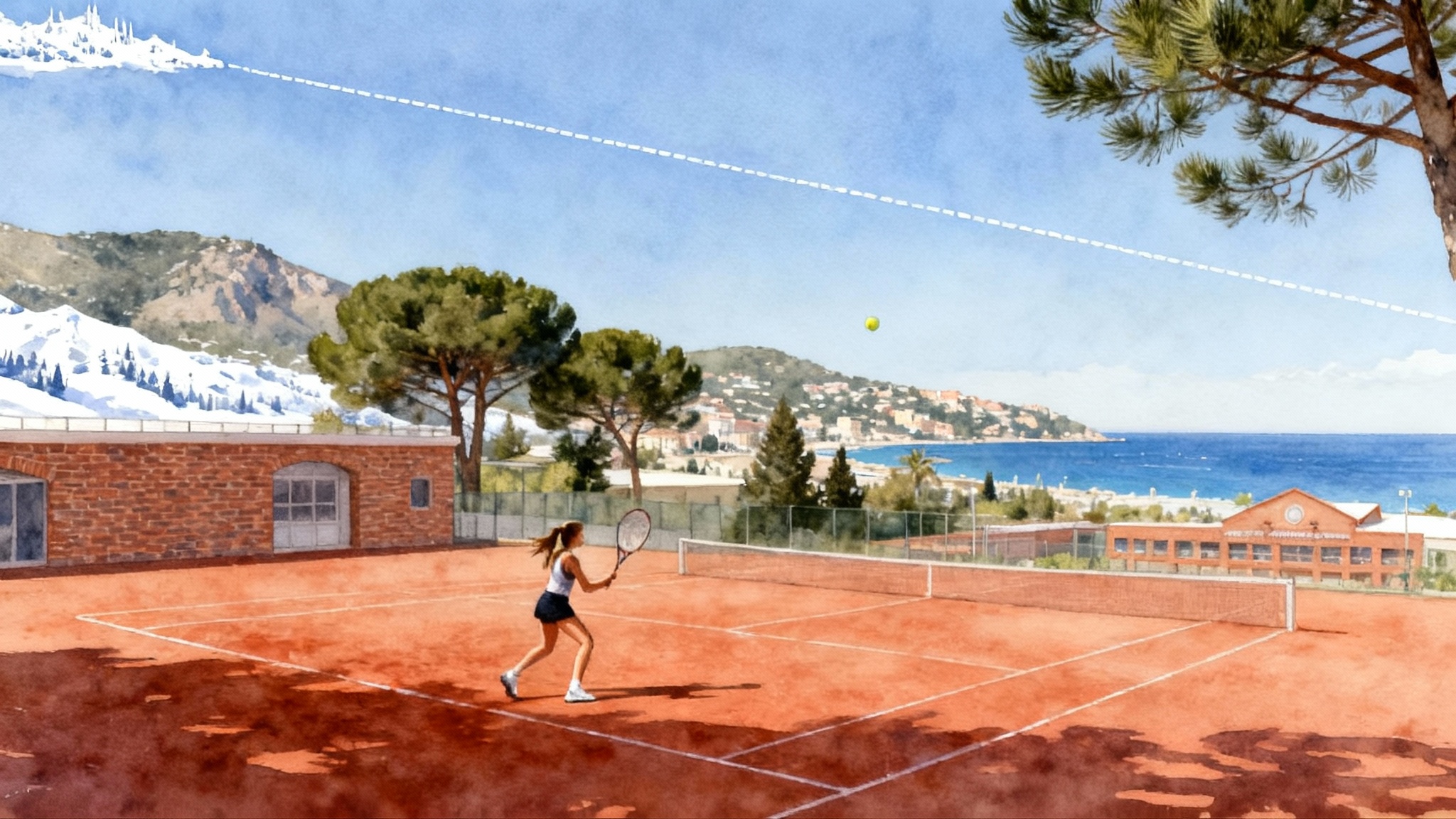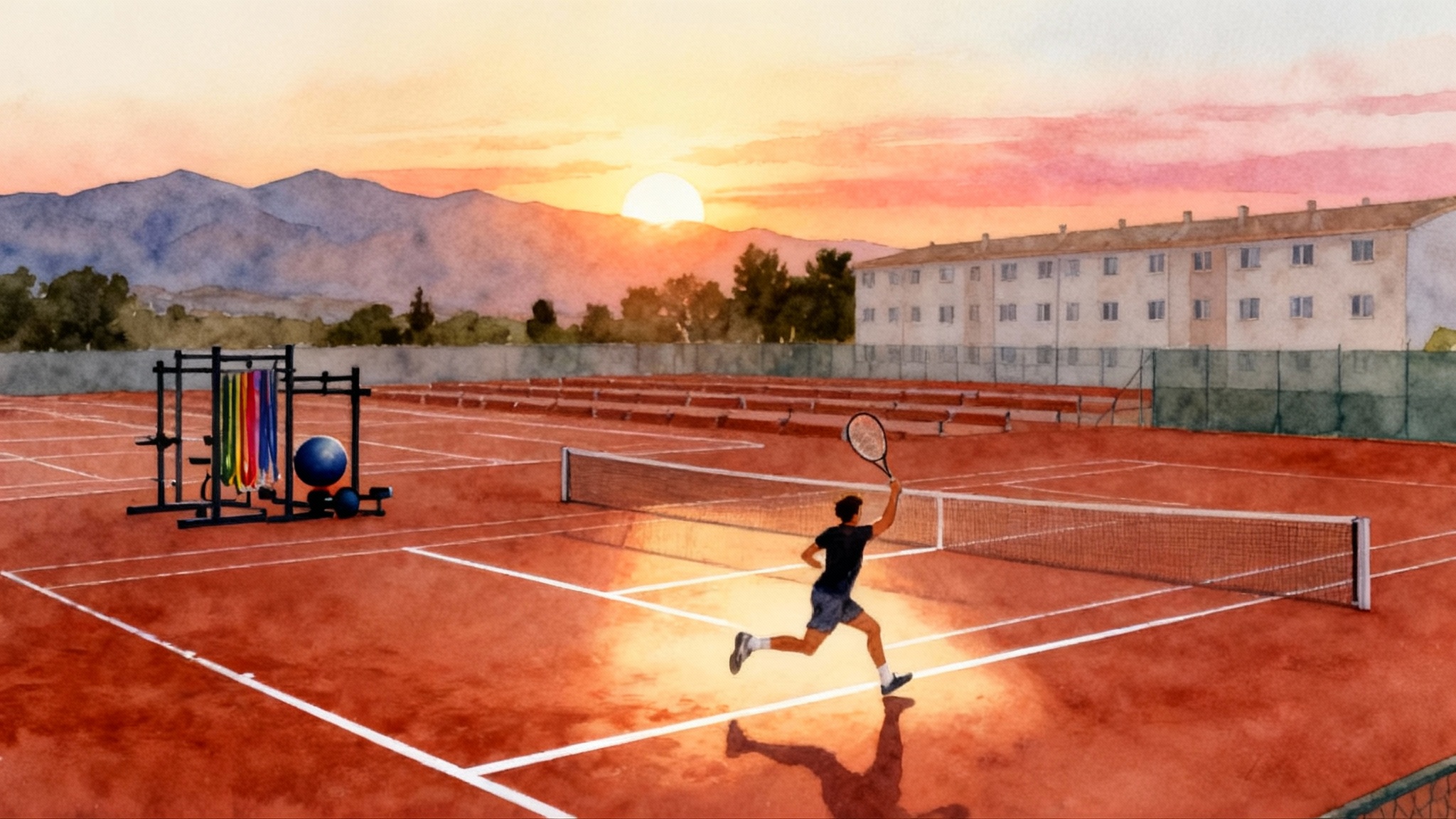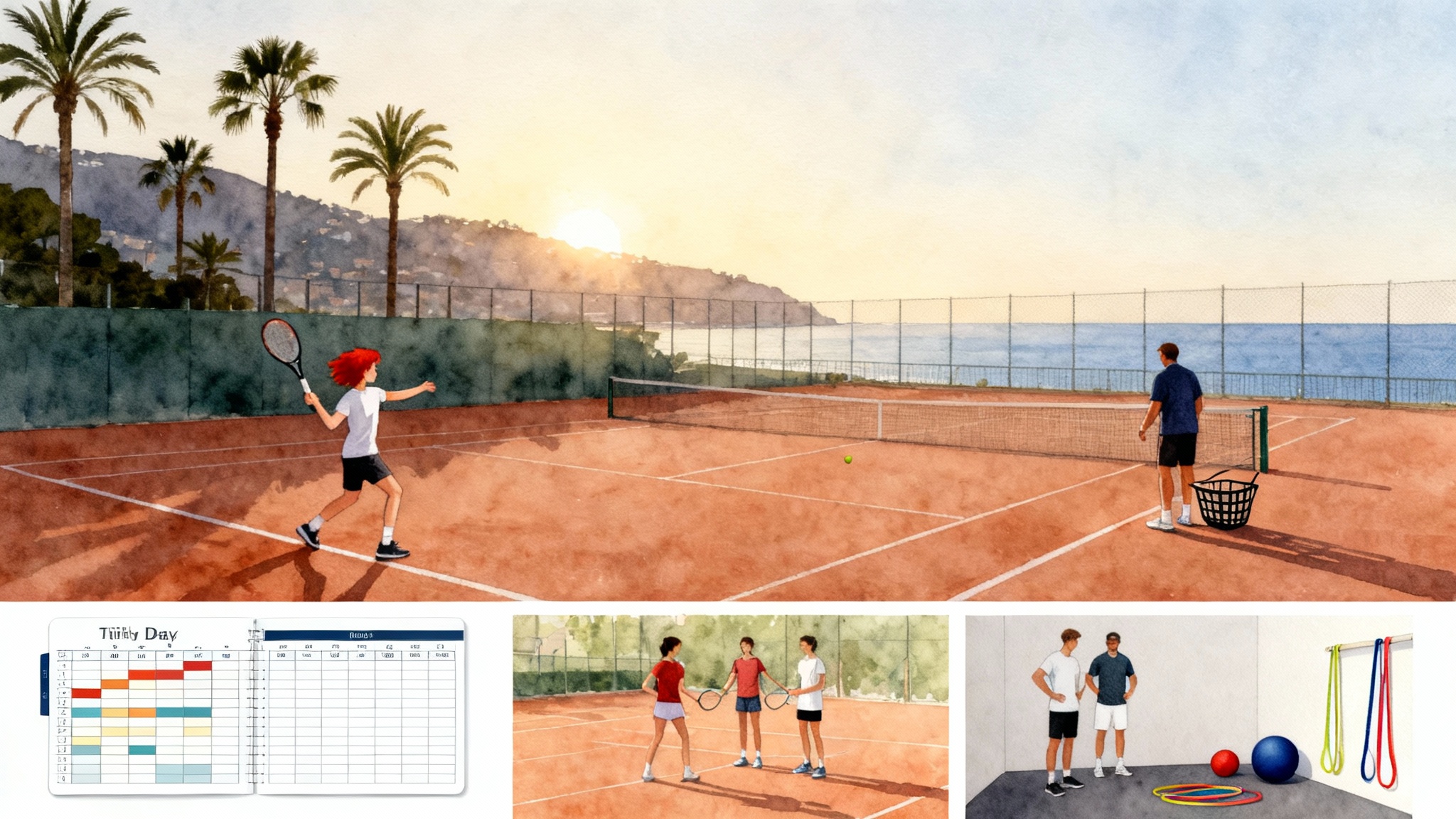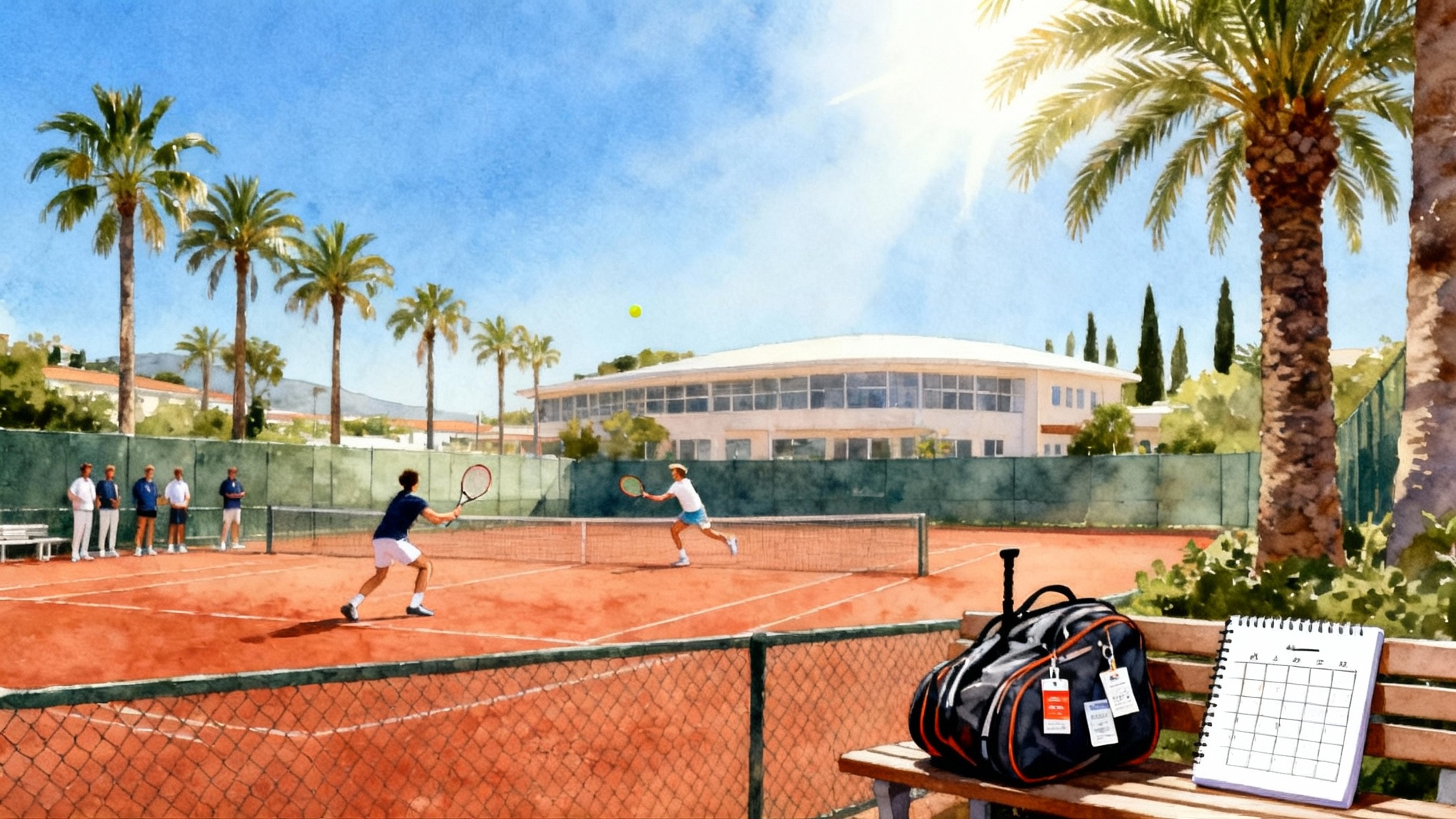Frances Tiafoe’s JTCC Pathway: Community Access and Match Play
How a community-first academy, scholarship support, and a match-play culture forged Frances Tiafoe’s style and resilience. We break down his choices at JTCC and turn them into practical frameworks for families and ambitious juniors.
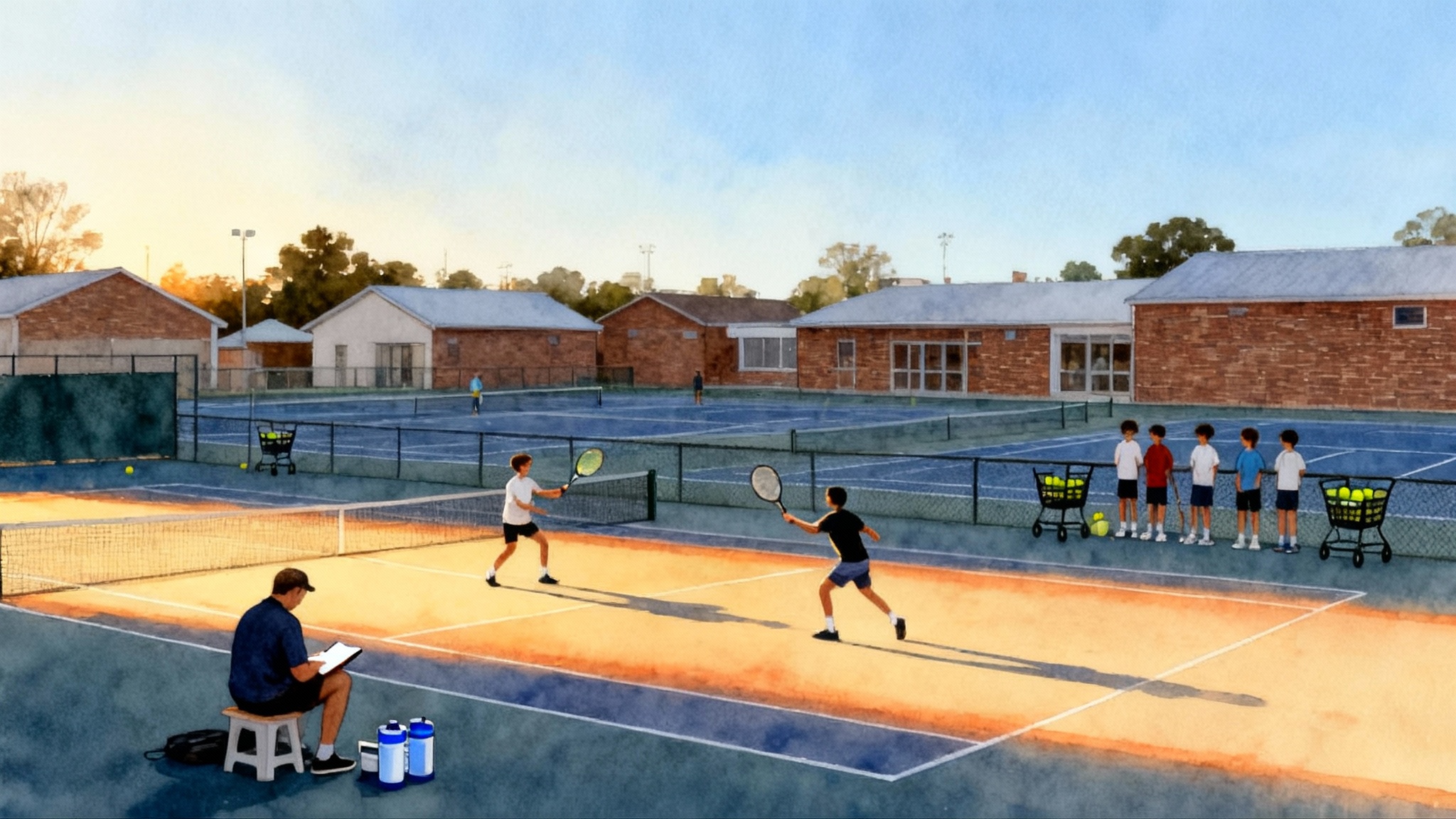
Why Tiafoe’s origin story matters
When you watch Frances Tiafoe explode into a forehand, you see more than a highlight. You see a childhood spent around courts, a training culture that prized real competition, and a community that reduced the cost of access so talent could breathe. The Junior Tennis Champions Center, known as JTCC, in College Park, Maryland, is not just the place where Tiafoe learned to hit a ball. It is the system that shaped how he competes, how he handles pressure, and how his family navigated the junior maze.
This article explains that system with practical detail. We will unpack what JTCC’s community-access model looks like, why scholarship support changed the Tiafoes’ options, and how a match-play-heavy approach built a game that loves the big moments. Then we translate Tiafoe’s key choices into a blueprint families can use this season.
JTCC in plain terms
JTCC is a mission-driven training center in College Park that blends high-performance coaching with a community pathway. Its model aims to widen the entrance to the sport, then build an environment where kids compete often and learn fast. If you are new to the story, start with the center’s own description of its mission and pathway programs, which shows how community access and scholarships work at the ground level. See the center’s summary in this JTCC pathways and support.
Two things make JTCC stand out for families who do not have unlimited budgets:
- Access first. The club connects with local schools, runs outreach, and invites children to try the sport without heavy upfront cost. This lets coaches identify enthusiasm early and place motivated kids on an appropriate ramp.
- Scholarships and ladders. Financial aid is not a side program. It is part of the training ladder. If a player shows commitment and growth, the center works to keep the progression moving.
For the Tiafoe family, that access mattered. Frances and his twin brother Franklin spent long hours at JTCC because it was a second home. The environment was more than courts and baskets of balls. It was a network of coaches, older players, and daily competition.
The decision to stay in the ecosystem
Every family eventually faces a fork. Do we chase a new coach each year, hop from academy to academy, and travel constantly for points, or do we deepen roots where the player is understood? The Tiafoes chose depth. Remaining inside the JTCC ecosystem gave Frances three advantages that are easy to overlook:
-
Shared language. Long-term coaching relationships build a common vocabulary. When a coach says “hold shape on the forehand,” the player knows the exact feel that cue is meant to trigger. That saves months of trial and error.
-
Trust during dips. Juveniles do not progress in a straight line. Keeping a consistent team reduces panic when a rating stalls or a growth spurt scrambles footwork. The team has seen the player’s habits over years, not weeks.
-
Competitive rhythm. JTCC runs internal match play, ladders, and practice sets that create a weekly heartbeat. That rhythm is lost if a player is always on the road or between programs.
This mirrors what we saw in Djokovic’s Pilic Academy years, where continuity amplified gains.
If you are a parent, the takeaway is not that you should never change coaches. It is that a stable base multiplies the impact of each hour of training. Only move if the new environment offers a clearly better developmental fit that you can define in writing.
Coach continuity, explained
Coach continuity is not the same as coach comfort. A good coach will increase the difficulty as the player is ready. Continuity means the coach holds the long arc of the player’s game in mind. In Tiafoe’s early years at JTCC, his coaches pushed tempo and creativity without sanding off the instincts that make him unpredictable. The result was a style that can lift or change pace on demand.
Here is why this matters in junior tennis:
- Technical patience. Grooving a serve platform stance or a backhand grip can take many months. A coach who knows the origin story of a habit can correct it with fewer side effects.
- Tactical baselines. Over years, a coach maps the shots that hold under stress and the ones that leak errors. That map guides match plans and practice priorities.
- Emotional bandwidth. The player hears hard truths better from a voice that has been there through wins and losses.
Action for families: keep a shared document where the coach writes the three long-term projects for the season, the one or two non-negotiable habits, and the tournament plan. Revisit it monthly. This is how you harness continuity rather than hoping for it.
A similar development loop appears in Coco Gauff’s academy path, where clear plans and steady voices supported big jumps.
Match-play heavy training and the Tiafoe style
Tiafoe’s game loves chaos. He is dangerous when the rally becomes a question mark. That did not happen by luck. JTCC trains with more live points and scenario play than many programs. Think of training like building a language. Basket drilling is vocabulary. Match play is conversation. You need both, but conversation makes you fluent.
At JTCC, players commonly stack their week with sets, tiebreakers, and decision-making games. Examples:
- Crosscourt to down-the-line switch on the third ball, then play out the point. Score it.
- Serve plus one to a target, then open play. If the target is missed, replay the point from zero.
- Return games that start at 30-40 to rehearse pressure.
This approach built Tiafoe’s composure in breakers and his readiness to vary spins and heights. He learned to play the person, not just the drill. The habit of solving problems in real time is what you see when he changes depth mid-rally or serves and volleys to flip a pattern.
How to copy the idea at your club:
- Aim for a 60 to 70 percent share of live points within on-court time once technique is stable. Younger or newer players might be at 40 percent until grips and contact are settled.
- Score everything. Players try harder, and coaches get data.
- Layer constraints. One day, second serves must land to the body. Another day, the first groundstroke must clear the service line by one racket length. Variety is a teacher.
Smart junior scheduling, not just more trips
Frances did not become Frances by chasing stamps in a passport. Scheduling can either sharpen a game or turn the season into a blur. JTCC players often build from local to sectional to national events, mixing in internal match days to keep the volume high without burning travel budget.
What smart looks like:
- Start local. Use United States Tennis Association events in your section to build repetitions with purpose. Quick turnarounds mean more matches per dollar.
- Use back-to-back weekends. Play two local tournaments in a row, then take a lighter week focused on serve, returns, and physical work.
- Protect learning windows. After a big technical change, downshift the event level for three weeks so the new skill survives pressure.
- Chase style matchups, not only points. If the player struggles with lefty spin or deep court returners, pick events where those opponents are common.
Deciding when to step up:
- The player regularly wins local events and collects six to eight pressure sets per month in training. Move to stronger draws.
- The coach can name three reliable patterns the player can execute against seed-level opponents. Do not step up with a blank plan.
- Fitness holds for two full matches in one day without cramping or form collapse.
If you are in the Mid-Atlantic, nearby options like OSSA Tennis Academy in Rockville can supplement match volume without heavy travel.
What Tiafoe’s family did right
Families cannot copy someone else’s biography, but they can copy choices. The Tiafoes leaned on three repeatable moves:
-
They treated the center like a second home. More hours on site meant more casual sets, more mentors, and more chances to hit with players just above their level.
-
They valued people over facilities. A great coach, a reliable hitting partner, and a supportive peer group beat a fancy locker room every time.
-
They let competition teach. Instead of micromanaging from the fence, they let coaches run the show and let matches expose what needed work. Then they used training to address the leaks.
A framework you can adopt this month
Here is a simple three-part framework that translates the JTCC approach into steps any family can implement.
Part 1: Access and affordability
- Ask your academy what percentage of training hours can be converted to supervised match play. If the answer is low, request a weekly ladder or challenge day.
- Inquire about need-based aid or work-for-fees options. Many community clubs have quiet funds or partnerships. Put your request in writing with a short summary of the player’s goals and commitment.
- Carpool for tournaments and split housing when possible. Savings on travel increase the number of events you can enter.
Part 2: Coach continuity with accountability
- Assign a primary coach who owns the long-term plan. If specialists help with serve or fitness, they should write updates in the shared plan.
- Set a monthly review where the coach rates three game elements on a simple scale: serve effectiveness, first four shots win rate, and break points converted. Use video to anchor the scores.
- Give the coach veto power over event selection when a technical change is underway. Protect the work.
Part 3: Match play as the engine
- Every practice should have at least one scored segment. Tiebreakers, first-to-four short sets, or return games starting at 30-40.
- Track pressure reps. How many breakers did the player play this week, across practice and tournaments? Aim for six to ten for teens in season.
- Script variety. One day favors net approaches. Another day forces two crosscourts before a line change. Variety drives adaptability.
Building resilience the JTCC way
Resilience is not a motivational poster. It is a habit stack. JTCC’s environment builds it with repetition under score, constant exposure to slightly stronger players, and the normalization of failure as feedback. In Tiafoe’s case, growing up around a center also meant he saw many pathways. When your heroes are walking past your court, tough days feel normal rather than terminal.
Elements you can use:
- Normalize replay. When a player loses a match tiebreaker 8-10, put them in another breaker within the hour. The fastest cure for fear is a second try.
- Celebrate micro wins. If the return plan was to block backhand returns deep middle, measure success by that execution, not the match score.
- Share courts with older players. Ten minutes of cooperative hitting with a college player recalibrates pace expectations better than a week of cones.
The role of role models and big-stage belief
Seeing someone from your courts on stadium television makes the big stage feel possible. Tiafoe’s rise did that for the next wave at JTCC. That belief is not fluff. It increases risk tolerance on big points and reduces the sense that a loss ends the journey. If belief feels abstract, show your player how a professional describes his own origins. The Association of Tennis Professionals profile gives a tidy snapshot of Tiafoe’s path and community roots. Share a short piece like the ATP profile for Frances Tiafoe and talk through what parts you can copy this month.
Common pitfalls to avoid
- Over-travel. Flying to a higher-grade event to lose two matches produces fewer learning reps than a strong local weekend with eight pressure sets.
- Switching coaches after a bad month. Look for trend lines, not one event. Change only when the plan is missing, not when patience is missing.
- Drill bias. Players who never keep score in practice often crumble at 5-all. Score more, panic less.
- Equipment chasing. A new frame will not fix second-serve placement. Put that money into more supervised matches.
A sample week that reflects the JTCC spirit
Monday
- Morning: mobility and band work, 30 minutes.
- Court: serve targets, 30 minutes, then pattern play, 45 minutes, then one tiebreaker ladder, 30 minutes.
- Gym: single-leg strength, 30 minutes.
Tuesday
- Court: return games from 30-40 score, 45 minutes, then two short sets, first to four, 45 minutes.
- Video: five minutes on return position, two clips from last weekend.
Wednesday
- Court: approach and volley day with live feed, 60 minutes, then one full set, 45 minutes.
- Recovery: light cardio, 20 minutes, stretch.
Thursday
- Court: serve plus one to deep middle, 30 minutes, then two breakers from 3-3 starts, 30 minutes, then target games, 30 minutes.
- Gym: core and sprint mechanics, 30 minutes.
Friday
- Court: match simulation with changeovers, one full set, 45 minutes, then pressure drills based on coach notes, 30 minutes.
- Logistics: confirm entry and transport for weekend event, pack snacks and hydration.
Saturday-Sunday
- Local tournament or in-house match day. If out early, schedule practice sets on site.
Budget planning in a community-first model
- Replace one travel event per month with an in-house or nearby UTR day. Universal Tennis Rating events can provide three to four matches in a weekend with minimal travel. Ask your club to host if none exist nearby.
- Build a hitting co-op. Three families rotating balls, courts, and rides can double match volume at half the cost.
- Apply early for aid. If your center offers scholarships, the calendar matters. Submit a simple player resume, school report, and a letter of commitment before deadlines.
Measuring progress like a coach
Beyond wins and losses, track metrics that predict future success:
- First serve points won percentage in practice sets.
- Break points created per set, and converted.
- Rally length distribution. Are you winning more of the 0-4 shot points after serve and return work?
- Net attempts per set, and success rate.
Update these monthly and compare to earlier months. When numbers stall, choose one lever to pull, not five. For example, move return position one shoe length forward on second serve points for two weeks and re-measure.
Bringing it all together
Frances Tiafoe’s story is not a fairy tale. It is a blueprint. A community-access center opened the door. Scholarships and a practical ladder kept him on court. Coach continuity protected his long-term development. A match-play culture taught him to thrive when the score tightens. None of these ingredients require celebrity. They require clarity and repetition.
If you are a parent or a player plotting a season, start by choosing an environment that feels like a second home. Ask for more scored play. Commit to a coach who can see your arc and will tell you the truth. Spend travel money on the right weekends, not the most weekends. Do this for a season, measure the right things, and the big stage stops feeling distant. It starts to feel like the next court over.
